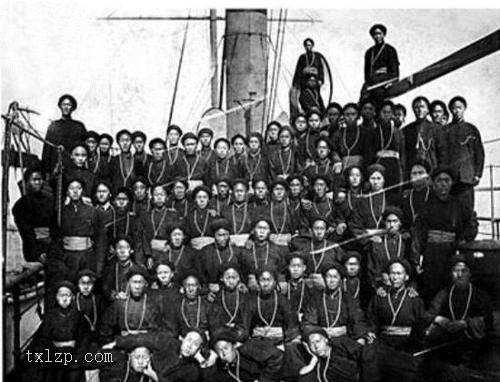Period:Unknown Production date:4700BC-2900BC
Materials:jade
Technique:drilled
Subjects:mammal (pig?) dragon (?)
Dimensions:Height: 6.30 centimetres Width: 5 centimetres
Description:
Neolithic jade pig dragon.
IMG
![图片[1]-figure BM-2022-3034.46-China Archive](https://chinaarchive.net/Unknown/Jades/602_.jpg)
Comments:This is a typical coiled pig-dragon, one of the principal types of Hongshan culture jade carving. Although it is belongs to the category of small, rather than large, dragons its form is very similar: the thick body coils around so that the tapering, pointed tail abuts the straight jaw of the powerful head. The neck is less tightly turned than the tail, making for an asymmetrical profile. The head has the characteristic features of rounded but slightly pointed horns, bulging eyes and nostrils, and lips in faint moulded lines above the flattened jaw. Both the central hole, which created the body, and a suspension hole in the back of the neck have been drilled from both sides. In the upper hole traces of the abrading material can be seen in small concentric scored lines. This dragon resembles a piece in the Liaoning Provincial Museum and a number of other similar examples are known, some of which may be copies. The pig-dragon shape may have been developed from the slit ring, known from a very early period. It was obviously of great importance to the Hongshan peoples as we can see from the very substantial and beautifully worked examples in this form. Although both the design of its face and the shape of its body had some influence in the Liangzhu period and the Shang dynasty, the veneration of the form seems to have disappeared with the Hongshan people themselves. See Rawson 1995, p.116, cat.no.1:4.
Materials:jade
Technique:drilled
Subjects:mammal (pig?) dragon (?)
Dimensions:Height: 6.30 centimetres Width: 5 centimetres
Description:
Neolithic jade pig dragon.
IMG
![图片[1]-figure BM-2022-3034.46-China Archive](https://chinaarchive.net/Unknown/Jades/602_.jpg)
Comments:This is a typical coiled pig-dragon, one of the principal types of Hongshan culture jade carving. Although it is belongs to the category of small, rather than large, dragons its form is very similar: the thick body coils around so that the tapering, pointed tail abuts the straight jaw of the powerful head. The neck is less tightly turned than the tail, making for an asymmetrical profile. The head has the characteristic features of rounded but slightly pointed horns, bulging eyes and nostrils, and lips in faint moulded lines above the flattened jaw. Both the central hole, which created the body, and a suspension hole in the back of the neck have been drilled from both sides. In the upper hole traces of the abrading material can be seen in small concentric scored lines. This dragon resembles a piece in the Liaoning Provincial Museum and a number of other similar examples are known, some of which may be copies. The pig-dragon shape may have been developed from the slit ring, known from a very early period. It was obviously of great importance to the Hongshan peoples as we can see from the very substantial and beautifully worked examples in this form. Although both the design of its face and the shape of its body had some influence in the Liangzhu period and the Shang dynasty, the veneration of the form seems to have disappeared with the Hongshan people themselves. See Rawson 1995, p.116, cat.no.1:4.
© Copyright
The copyright of the article belongs to the author, please keep the original link for reprinting.
THE END



![[Qing Dynasty] British female painter—Elizabeth Keith, using woodblock prints to record China from the late Qing Dynasty to the early Republic of China—1915-China Archive](https://chinaarchive.net/wp-content/uploads/2022/11/image-191x300.png)

